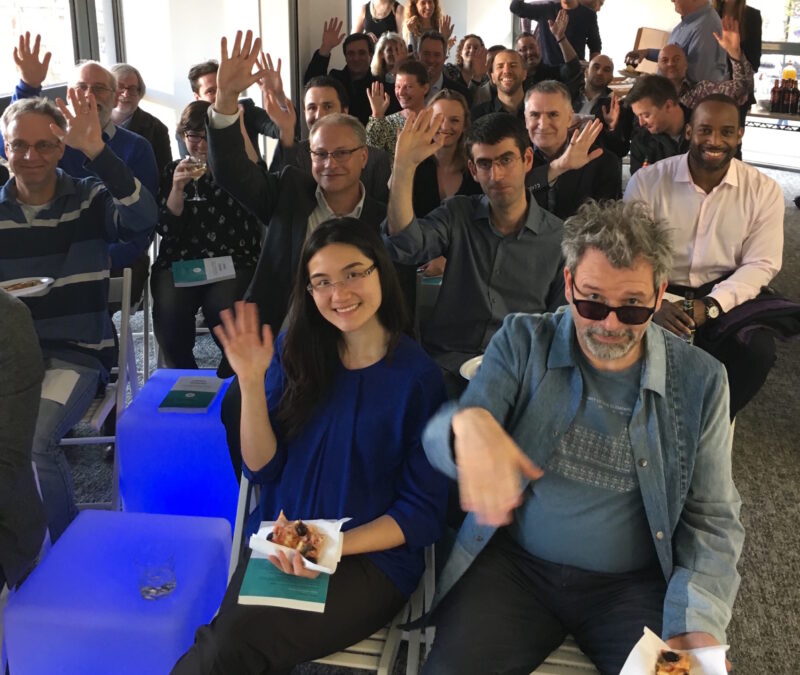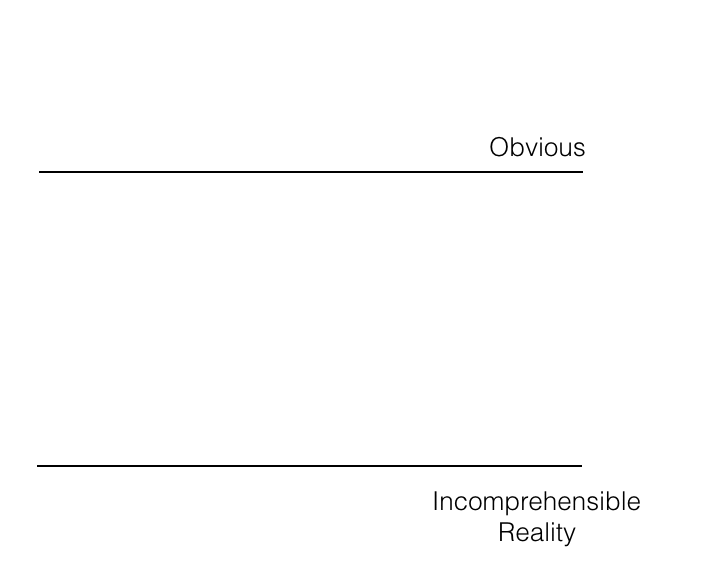This got me thinking about the notion of obviousness in large companies, whose inward-facing views can blind them from the realities of their changing situations and the need to initiate more innovative, forward-thinking strategies.
We construct our notion of obviousness on top of our beliefs, and we reinforce it with a bubble of self-sealing logic. When you are a large business that is making money and expanding, it is all too easy to keep your head down and stay comfortably inside your bubble, oblivious to everything that does not align with your own notion of what is ‘obvious’. For large, successful businesses, having a static notion of obviousness may have worked in the past – I am sure it was ‘obvious’ to Blockbuster in the 1990s that if they kept opening stores and growing, they would continue to prosper just as they had always done – but we now know this was not the case and the rise of high-speed internet allowed for the emergence of a superior business model. For many apparently successful businesses, the notion of what is ‘obvious’ and unquestioned is a contributory factor in their inability to achieve the dynamism and agility they need to survive.
One company trying to address this is the Ford Motor Company, who’s new philosophy is to stop thinking of themselves as an automotive company and start thinking of themselves as a tech company, or they might risk losing out to the likes of Tesla in the same way Blockbuster did to Netflix.
“Our roadmap must not just include smarter cars, but smarter roads and smarter cities,”
– Mark Fields, Ford CEO.
Ford understand that if they continue to operate as they did in the 20th Century, it will only be a matter of time before they go the way of General Motors in 2009: bankrupt and in need of bailing out. So, instead, they are looking to diversify through initiatives like using data analytics to improve quality assurance and lower the costs of vehicle insurance. It might be hard to see right now what the specific benefits of some of these actions will have, but at least they are not blinded by the ‘obvious’.
To begin thinking outside their comfort zone, companies can should experiment with new ways of working and new methods of strategy formation. For example, harnessing the collective intelligence of the organisation is a great way to generate innovative ideas – what we call Crowd sourcing insights, based on the idea that the people who traditionally make strategy decisions cannot possibly know more about the front-line services of a company than those providing them.
Crowdsourcing insights has been a valuable method of improving processes and strategy for the US retail giant Best Buy. Best Buy’s ‘Geek Squad’ chief, Jeff Severts, set out to discover the apparent disparity between the company’s marketing forecasts of certain products and actual results, which were originally blamed on poor marketing-led demand generation. Severts ran some internal pilots to tap into the hands-on knowledge and experience of Best Buy’s associates, which enabled him to gather alternative forecasting data which proved to be more accurate than those the company had relied upon. This system started life as a shared Excel spreadsheet, where employee ‘tips’ and observations were gathered, but the approach has since evolved into a fully-fledged prediction market, supported by a dedicated platform.
In dynamic, turbulent markets, it is essential that organisations stay closely in touch with key developments in their competitive environment. Another innovative method to extend an organisation’s thinking beyond its notion of obviousness is Customer innovation communities. This technique entails selected participants from outside an organisation being invited to help create customer-centric innovation. IBM were one of the first multinational companies to really engage with this method, in July 2006, they invited more than 100,000 individuals from outside their organisation to attend an innovation jam. Once the external participants had created a profile in the community, they could engage in brainstorming ideas around the future of transportation, healthcare, the environment, finance, and commerce.
This is not to suggest that customers hold all the answers for how a company should innovate, as there remains a role for visionaries such as Steve Jobs; but even with Apple, or the equally romanticised case of Henry Ford (who incidentally never said his famous quote: “If I had asked people what they wanted, they would have said faster horses.”), the record needs straightening a little. We like to think back to 1900s, and the birth of the Ford Model T, or to the early 2000s, and the first Apple iPhone, and imagine how these two innovators worked away behind closed doors designing the future, and then, when they were done, opened those doors and showed everyone. In reality, what Ford actually did that made him so successful was to stop trying to innovate his product and start trying to innovate his manufacturing process, which allowed for the Model T to gradually fall and become more affordable, which was exactly what his customers were asking for at the time.
Unfortunately, generating innovative strategies through methods like Crowd-sourcing innovation, or Customer innovation communities, is really only half the battle. Enacting innovation requires convincing those with the power to trust that the untrodden path might be superior to the ‘obvious’ currently successful one.
In Liminal Thinking, Dave Gray tells us that whether or not an idea gets traction comes down to whether or not it can develop either ‘internal coherence’ or ‘external validity’. Internal coherence is the easy one: if an idea aligns with our current ways of thinking, our current notion of obviousness, then it has internal coherence, and we’re likely to agree with it. External validity on the other hand is more elusive. For a new idea to gain acceptance and validity, it has to be tested and proven right, but the problem is, we do not like to test ideas that we don’t know we’ll agree with. Instead, we like to test ideas that already have internal coherence so we can be proved right and give ourselves a pat on the back, To do otherwise makes us feel uncomfortable and scared.
So what’s the solution? Well, as Dave Gray advises, we need to remove the fog around our beliefs so we can really examine and question the path that we have used to form them. If we can understand the process that we use to develop our notion of obviousness, then we can be aware of its limitations. Scaling this to an organisational level requires the development of an organisational culture that allows for a more open, inclusive and self-aware working environment. This should mean that new ideas can be examined, tested and potentially validated. Even when, by our current thinking, they may seem absurd.
If you want to find out more about how to kick off a meaningful digital transformation process inside your organisation, please head over to our dedicated pages, which outline a practical approach to getting started, or just get in touch to discuss.


